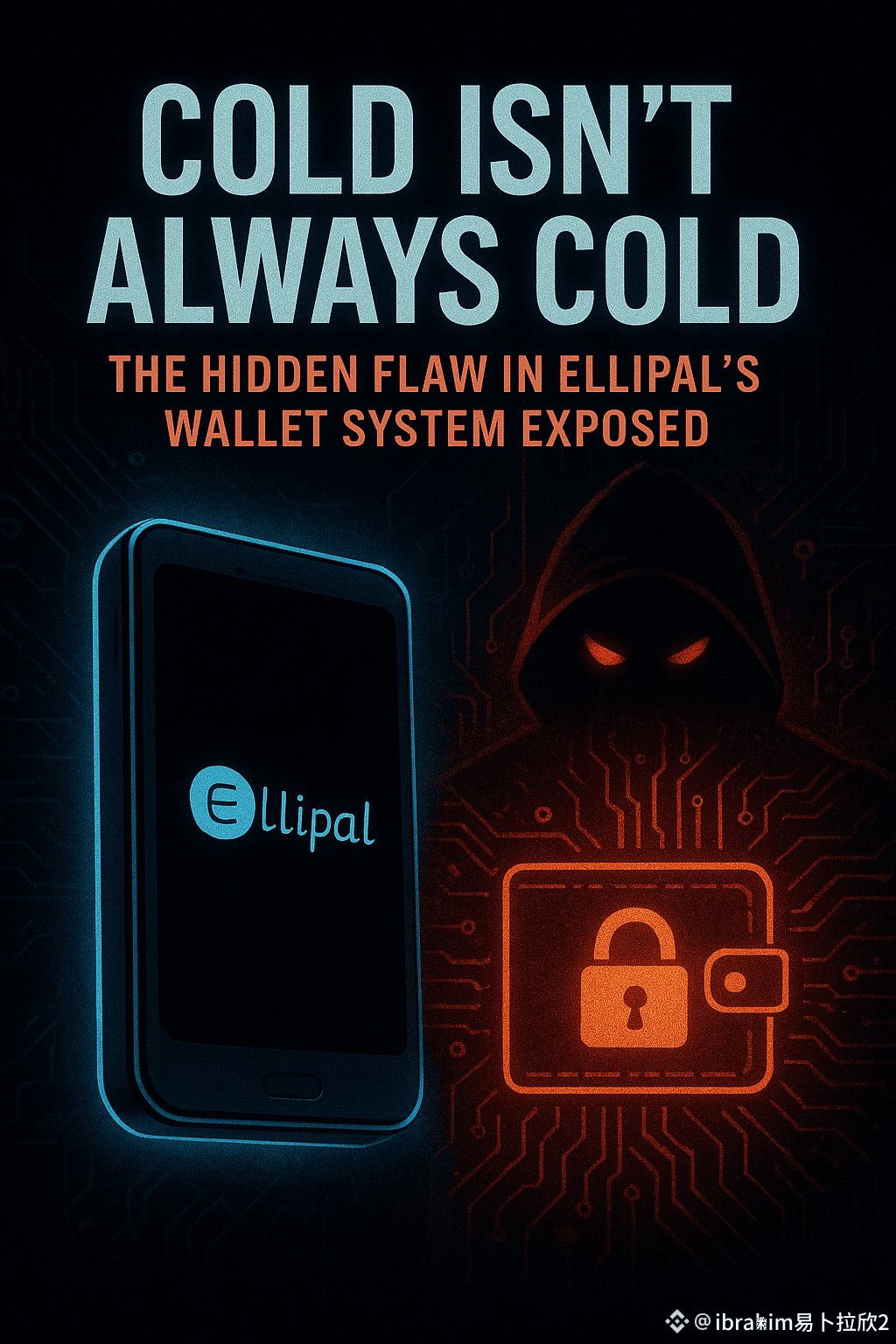When Brandon woke up to find his entire XRP stash vanished, he was stunned. His assets were supposed to be untouchable, locked behind one of the market’s most trusted “air-gapped” wallets — Ellipal. But as he dug deeper, the truth was far more complicated than the marketing promised.
🧩 The Dual Nature of Ellipal
Ellipal promotes itself as a fortress of offline security — a cold wallet that never touches the internet. The hardware device uses QR codes and NFC signing to verify transactions without physical or wireless connections, keeping private keys air-sealed from hackers.
But Brandon’s investigation, shared through Prophetic Money on X, revealed a critical oversight:
the Ellipal app actually houses two distinct wallets —
🔹 a cold wallet (blue) linked to the physical device, and
🔸 a hot wallet (orange) that lives entirely online.
This second wallet, designed for convenience, connects directly to the internet. And therein lies the trap.
> “The theft didn’t come from my cold wallet at all,” Brandon explained. “It was the app’s hot wallet — exposed online and hit through what looks like a phishing or malware
breach.”
⚠️ The Silent Risk Lurking in the App
Over the last few months, Reddit and Telegram have lit up with similar horror stories: funds drained, tokens swapped, and wallet approvals mysteriously executed.
While the hardware devices appear uncompromised, the Ellipal app — the bridge between security and usability — may be the weak link.
Some cybersecurity experts now warn that malicious contract approvals could be slipping through the app layer. Others point to potential supply-chain vulnerabilities or fake software updates impersonating Ellipal’s interface, tricking users into approving dangerous transactions.
🧠 The Misunderstood Line Between “Cold” and “Hot”
Brandon’s loss shatters a dangerous myth in the crypto space:
Not everything called “cold” is offline.
Many holders assume their crypto is safe as long as it’s under a hardware brand’s ecosystem. But in Ellipal’s case, coins in the app-based hot wallet are still online assets, exposed to digital threats unless manually transferred to the hardware-protected cold wallet.
That single step — moving assets from orange to blue — could be the difference between ownership and oblitera
tion.
🔒 A Wake-Up Call for All Crypto Investors
Brandon’s experience is more than a cautionary tale; it’s a critical wake-up call for anyone storing large sums through mobile-linked wallets.
In his words:
> “Always double-check where your funds truly sit — not just what the app shows.”
Crypto users are urged to:
Audit their wallet setup immediately.
Keep long-term holdings in true offline devices.
Avoid approving unknown smart contracts.
Update apps only from ve
rified sources.
🚨 The Bigger Picture
The Ellipal case underscores a brutal reality in 2025’s crypto landscape — security is only as strong as your understanding of it.
As blockchain technology evolves, attackers evolve faster, often preying on human error and blind trust in “secure” systems.
In the end, Brandon’s message echoes louder than any marketing slogan:
> “Cold wallets don’t fail — users fail to understand them.”
And for Ellipal and the XRP community, that’s a truth too cold t
o ignore.

